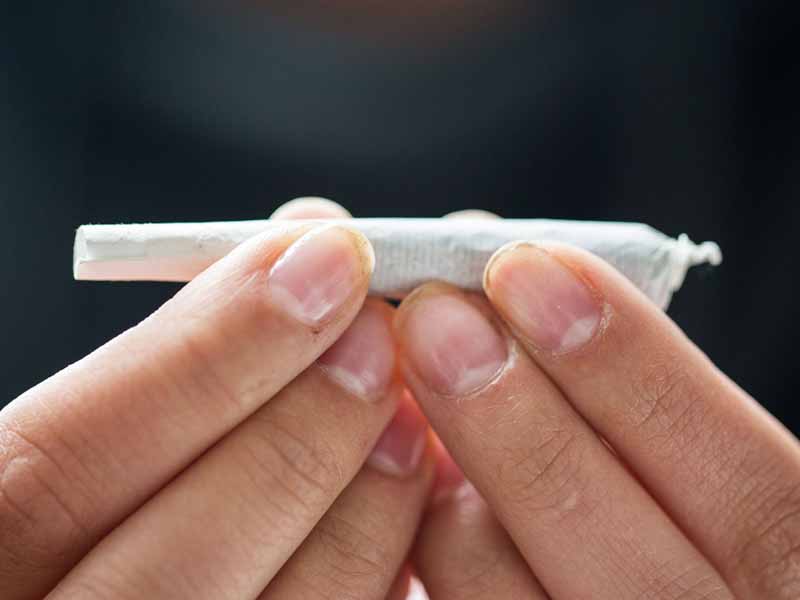Surgeon General Issues Advisory on Risks of Marijuana Use
Youth, Pregnant Women Encouraged to Stop Using
September 12, 2019 03:50 pm Michael Devitt – U.S. Surgeon General Jerome Adams, M.D., M.P.H., issued an advisory Aug. 29 on the health risks associated with marijuana use in adolescence and during pregnancy. He urged physicians and other health care professionals to take action and called on them to educate youth and pregnant women about the potential harms of the drug on the developing brains of infants and young people.
"No amount of marijuana use during pregnancy or adolescence is known to be safe," Adams said in the advisory. "Until and unless more is known about the long-term impact, the safest choice for pregnant women and adolescents is not to use marijuana."
"(Marijuana) is a dangerous drug," HHS Secretary Alex Azar added during a press conference broadcast the same day on social media. "For many, it can be addictive. And it's especially dangerous for adolescents and pregnant women because of what we know about how it affects the developing brain."
Background
As recently as a quarter-century ago, marijuana was still widely regarded as an illicit substance with no medical value. Today, more than 30 states, the District of Columbia and three U.S. territories have enacted laws that have either decriminalized adult use of marijuana or legalized medicinal use of marijuana or products that contain cannabidiol in adults.
Story Highlights
Surgeon General Jerome Adams, M.D., M.P.H., has issued an advisory on the health risks associated with marijuana use in adolescents and pregnant women.
Adams specifically expressed concern about the potential harms of marijuana use on the developing brains of infants and young people.
Family physicians and other health care professionals are encouraged to educate youth and pregnant women about the risks of using marijuana.
For adolescents, however, marijuana use remains illegal. Despite this, information developed by HHS' Office of Adolescent Health (now the Office of Population Affairs) indicates that marijuana is the second-most commonly used substance among adolescents, behind only alcohol. Marijuana use in 12th-grade students, in particular, has increased during the past decade, and the number of adolescents overall who think marijuana is harmful has decreased.
Pregnant women, according to Adams, use marijuana more than any other illicit drug. He cited a JAMA study published earlier this year that found marijuana use in pregnant women more than doubled between 2002 and 2017, as well as a 2018 study conducted in Colorado that showed nearly 70% of cannabis dispensaries contacted recommended that pregnant women use cannabis to treat first-trimester morning sickness.
Adams warned that marijuana can affect brain development in newborns and lead to conditions such as hyperactivity and poor cognitive function. And because the brain continues to develop into early adulthood, he cautioned that marijuana use in adolescents could also negatively affect areas of the brain linked to attention, memory and decision-making. Moreover, use of the drug could increase the risk for psychotic disorders such as schizophrenia and heighten the risk of opioid misuse.
"Pregnant women and youth -- and those who love them -- need the facts and resources to support healthy decisions," said Adams. "It is critical to educate women and youth, as well as family members, school officials, state and local leaders, and health professionals, about the risks of marijuana, particularly as more states contemplate legalization."
The Family Physician's Role
AAFP Senior Vice President for Health of the Public, Science and Interprofessional Activities Julie Wood, M.D., M.P.H., told AAFP News that family physicians are uniquely positioned to educate patients on the health effects of marijuana and provide them with the latest information.
"Family physicians have an important and unique role to care for patients throughout the life cycle and should counsel patients and families about the information in the surgeon general's advisory against marijuana use in adolescents and pregnant women," Wood said. "Marijuana research and evidence has been limited, and we must be vigilant to provide our patients the most up-to-date information."
Wood recommended that FPs read the Academy's position paper on marijuana and cannabinoids, which includes a wealth of information on evidence, health effects, research and regulatory considerations and links directly to the Academy's policy on marijuana possession for personal use.
Additional Resources
"There is a false perception that marijuana is not as harmful as other drugs," Adams said in a news release that accompanied his advisory, reiterating his warning that no amount of marijuana use has been deemed safe in these at-risk populations.
To counter that notion, his advisory points to a number of resources for family physicians and other health care professionals to use when discussing marijuana with patients. These include
- a marijuana pregnancy and breastfeeding guidance document from the Colorado Department of Public Health & Environment that allows FPs to integrate marijuana education into prenatal care visits;
- a clinical report from the American Academy of Pediatrics on counseling parents and adolescents about marijuana use; and
- an ACOG Committee Opinion from the American College of Obstetricians and Gynecologists Committee on Obstetric Practice on marijuana use during pregnancy and lactation.
Adams also urged clinicians to ask their patients about marijuana use and to specifically educate expectant and new mothers, youth, and those susceptible to psychotic disorders about the risks.
"Further research is needed to understand all the impacts of THC on the developing brain, but we know enough now to warrant concern and action. Everyone has a role in protecting our young people from the risks of marijuana," he said.
